The superb New Zealand writer and illustrator team, Gillian Candler and Ned Barraud, have recently released their sixth collaboration in the Explore and Discover series, Up the River. Today Ned gives us a peek behind the scenes and tells us about the daily life of a New Zealand illustrator.
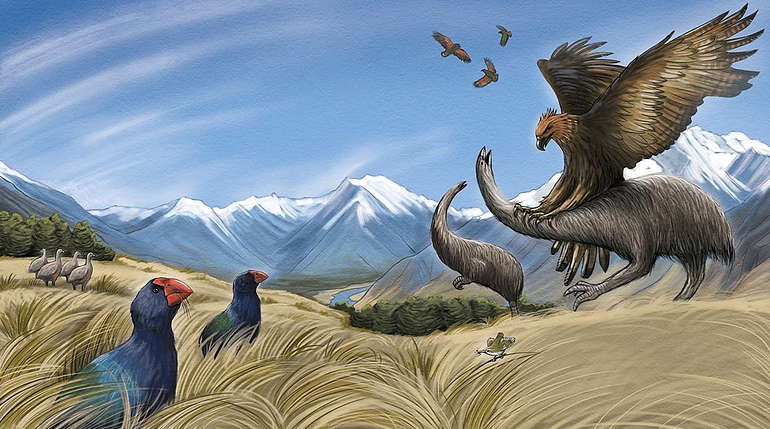
Thalia Kehoe Rowden, for The Sapling: Is there such a thing as an average day for you? What does it look like?
Ned Barraud: First thing in the morning, I make porridge for the kids – Rory, 13, Leila, 11, and Alfie, 7. Maybe, if there is time, I read them a bit of story (Harry Potter and the Goblet of Fire at the moment).
Then I drop kids at school and off to my work at Weta Digital in Miramar, Wellington. I work at Weta as a Texture Painter.
It’s my job to sit at a computer and paint 3D models. This can be anything in a movie that’s not real, from a dragon like Smaug to a boring old teaspoon! Everything needs to look completely realistic on the screen, so it can take a long time to get it looking perfect.
I try to break the day up with some fitness to get away from the computer. This could be Ping Pong, running, Yoga or biking.
After work it’s back home to Karori. Firstly I look after my seven chickens and collect the eggs. Then dinner, maybe more story time, and getting the kids to bed.
Once peace settles in the house I start working on my book Illustrations. Generally I try to do two hours every week night. I need to be quite disciplined about this, it’s easy to just blob out in front on the telly! I make sure I read before bed as it helps me relax.
Once peace settles in the house I start working on my book Illustrations. Generally I try to do two hours every week night. I need to be quite disciplined about this…
T: With all that going on, how do you manage to juggle projects?
N: Work at Weta takes up much of my time during the day. But I always have a sketch book at my work station. I make sure to draw any ideas that come to mind. I have a big collection of these sketch books. I often go back to old ideas and resurrect them.
Apart from the books I do with Gillian I also work on picture books. Over the years I’ve come up with lots of stories and two of these have been published. Moonman and more recently Watch out for the Weka. I also do the odd bit of freelance illustration work, mostly educational stuff.
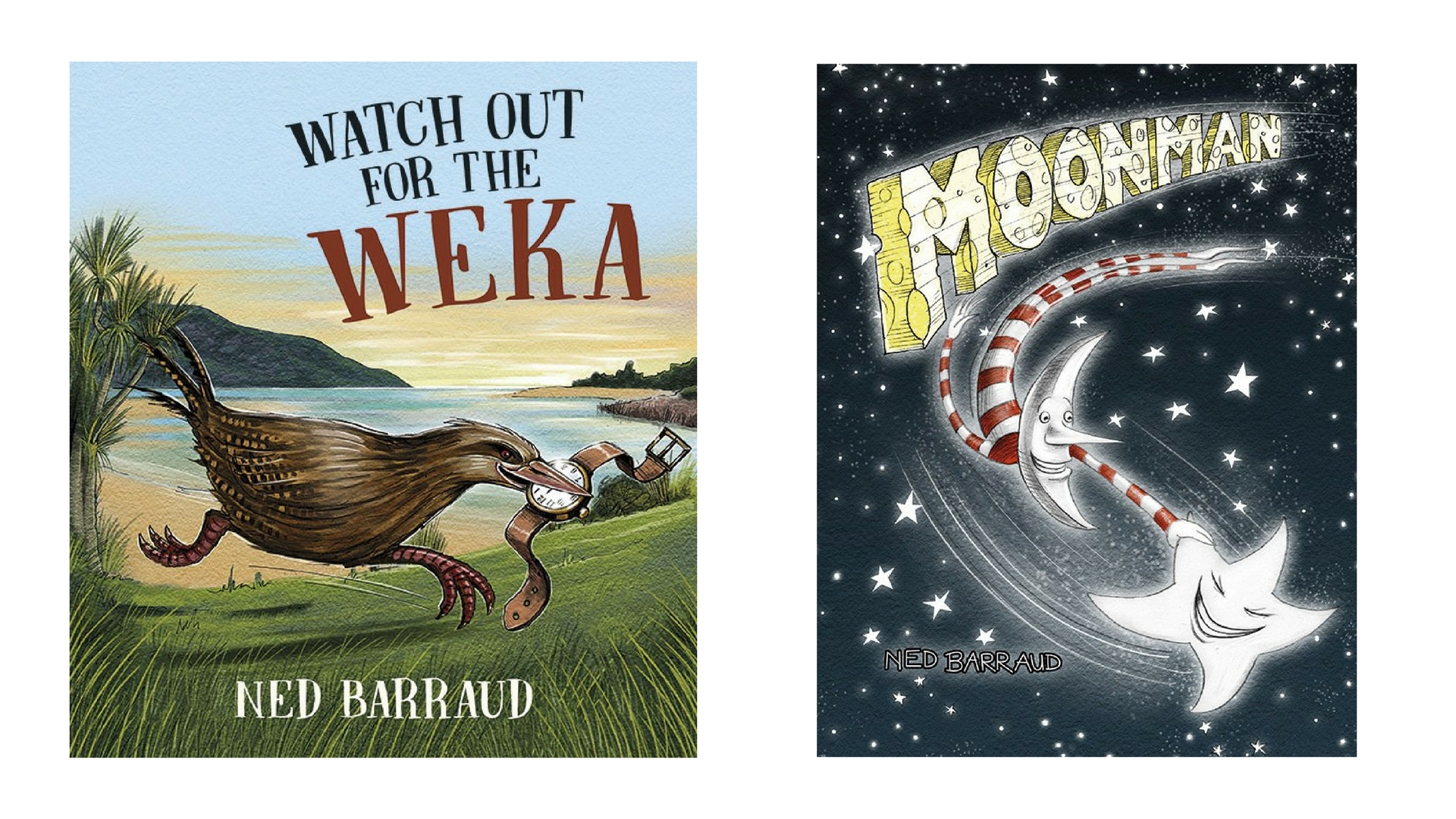
T: Here at The Sapling, we often commission book professionals to interview each other (like when Donovan Bixley interviewed Gavin Bishop), but today you’ve got a lay person asking the questions. So tell me, how long does it take to produce the illustrations for one of your Explore and Discover books? What’s the process, from start to finish?
N: There have been six books released in the Explore and Discover series: one book each year for the last six years. The latest, Up the River, is the last in the series.
It’s a long process. Firstly I get the draft text from Gillian. I use this to very roughly sketch out the pages. When this is done I send it off to the publisher to layout the text.
Once the text design is finished I do another set of sketches, but this time much more refined. These are then checked by a professional scientist to see if it’s all looking correct. Once it’s all approved I start on the final coloured artwork.
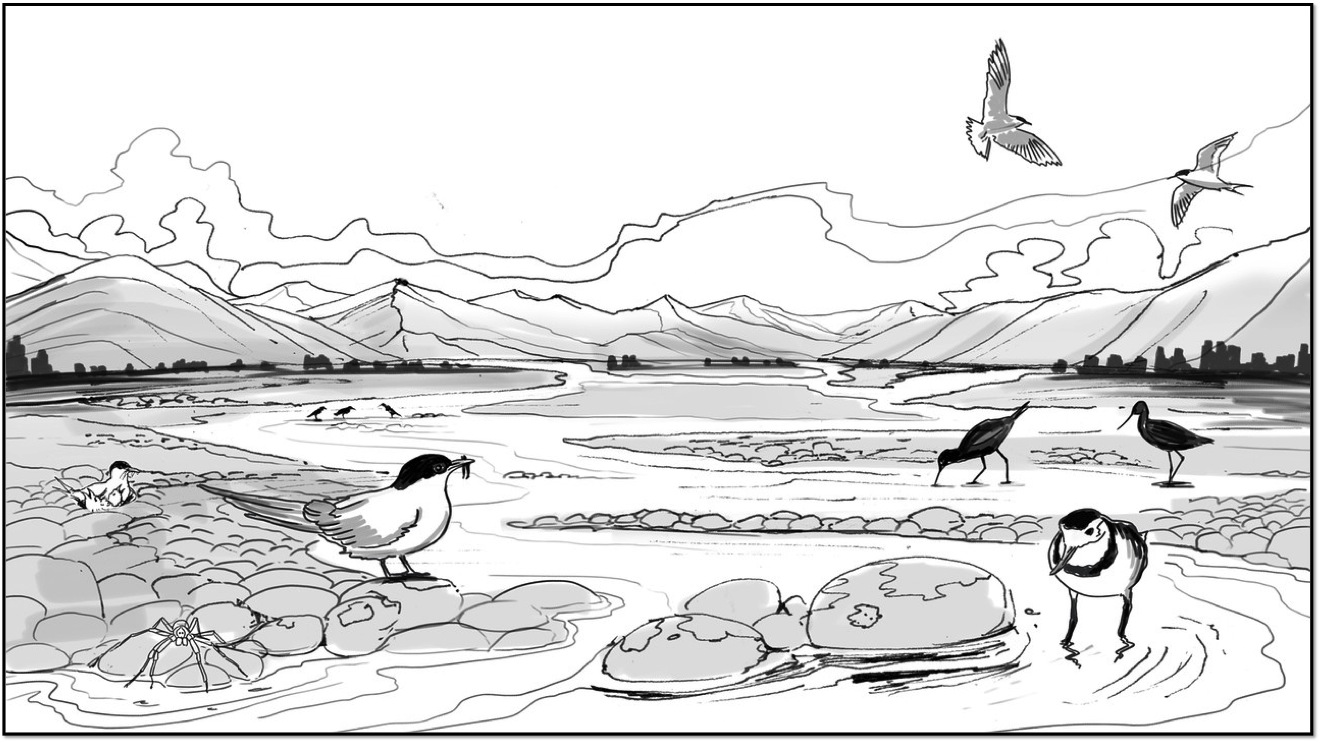
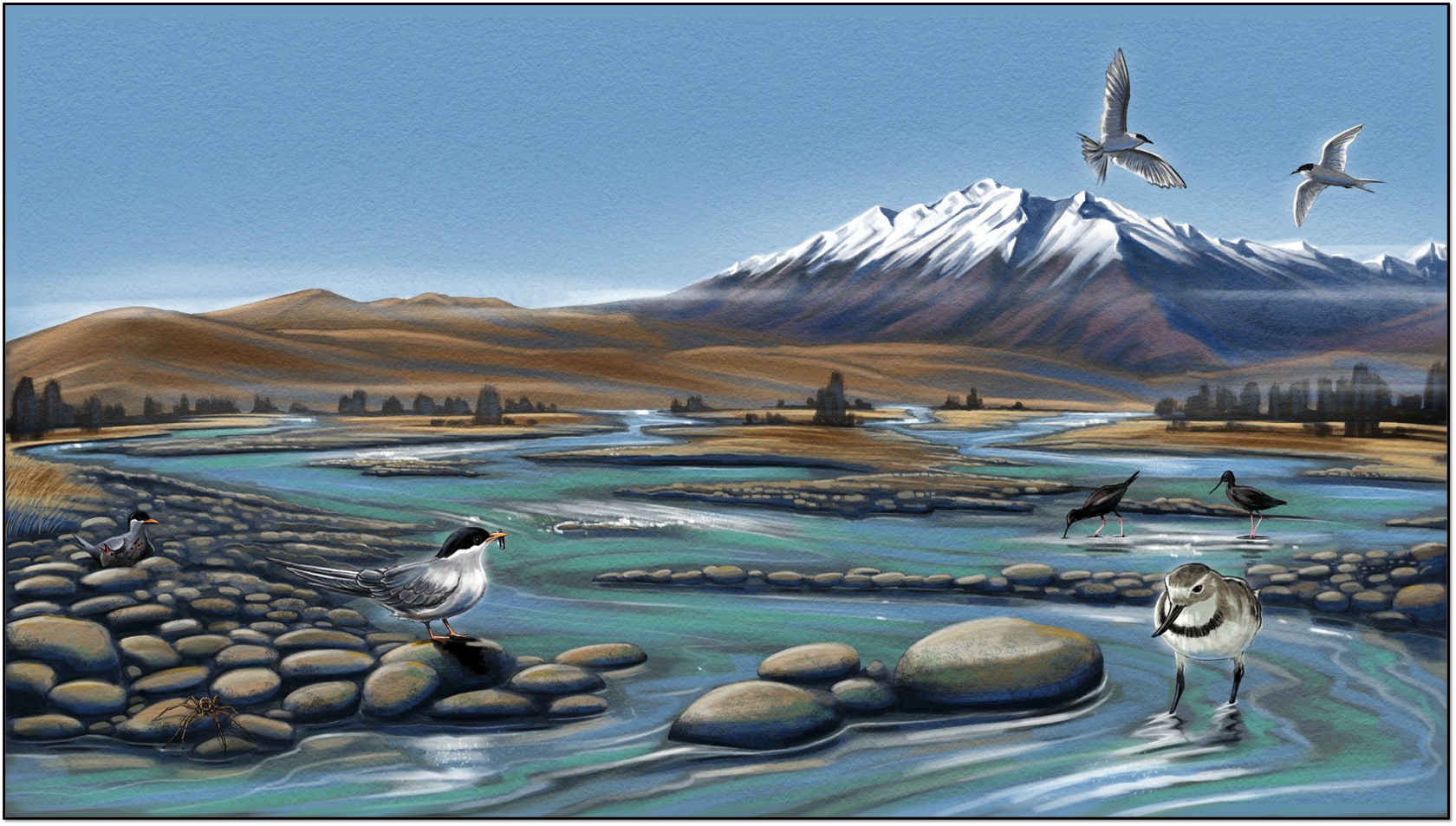
T: I’m fascinated by the role of the scientist! What kinds of things get corrected or suggested?
N: Gillian and I do a lot of back and forth as a book develops. Most of the big errors get weeded out in this process. Normally it’s just little things that get pointed out at the end, like ‘the gannet needs darker tips on its wings,’ or, ‘the supple-jack berries are a bit too orange,’ that kind of thing.
T: Apart from gannet wings, what are the easiest and hardest things to get right when you’re doing New Zealand nature illustrating?
N: One of the challenges is getting all the creatures into the composition without it looking too crowded and unrealistic. It takes quite a bit of re-positioning to get an illustration working, with everything the correct size and looking natural.
The easiest, most fun part is once all the rough sketches are approved and it’s time to apply the colour. It exciting to see the finish artwork taking shape.
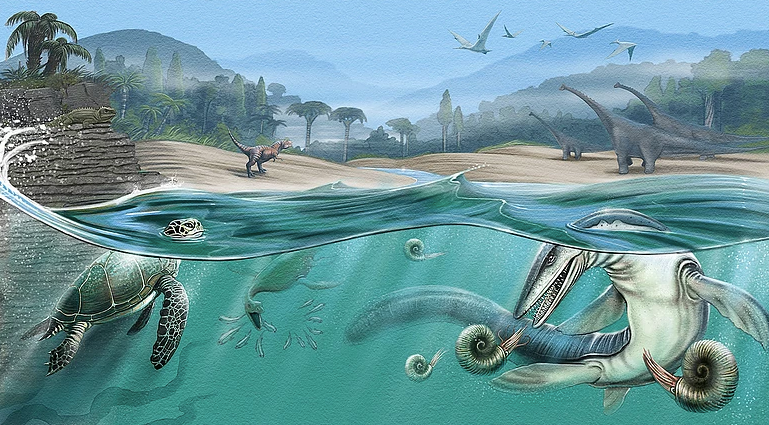
T: What tools of the trade do you use? Digital or old school?
N: It’s a combination of traditional pencil sketches and digital. I scan the drawing onto my computer and use photoshop to paint them up. I have a wonderful computer monitor which I can draw directly onto, it feels very natural to me.
I began my illustration career with old school painting methods. But, it’s so much easier to correct mistakes and rework images with digital. I don’t think I could produce the same quality, in the same time frame, with traditional painting.
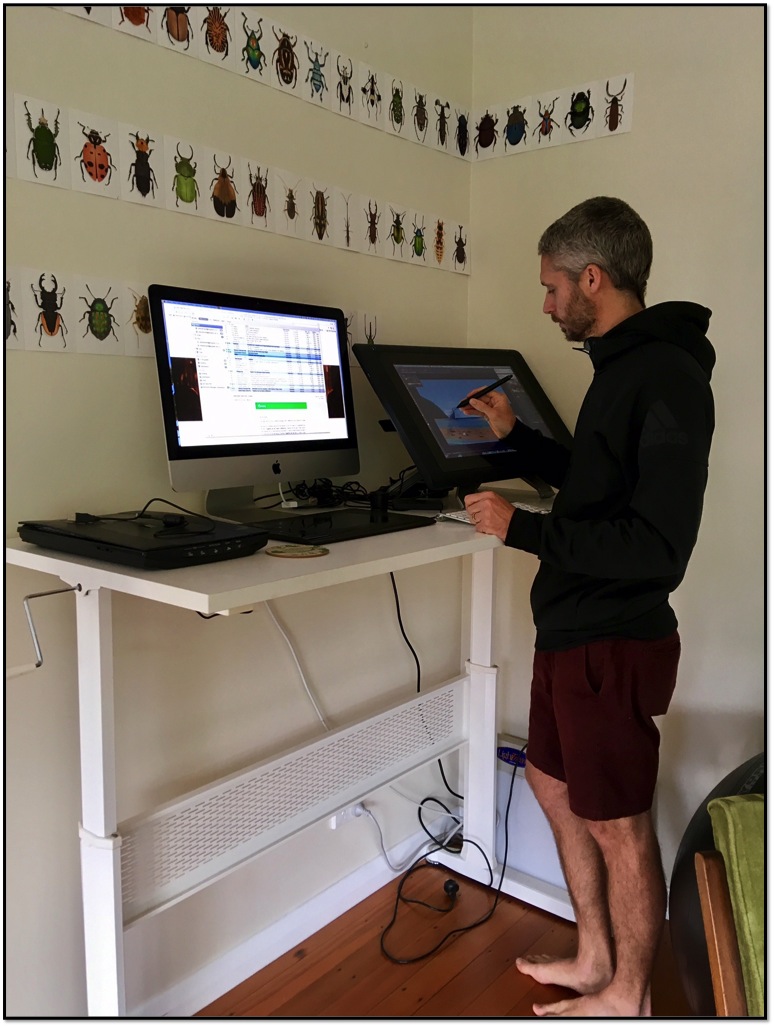
T: How do you combine work and family life?
N: It’s a jam-packed work life with Weta and illustration. But I always make time to read to my kids and put them to bed during the week. In the weekends I try and get out with them as much as possible: tramping, skiing, and camping trips, but there is never enough of this!
T: What else do your kids like reading? What do they think about you being an illustrator?
N: I have passed the art bug onto my kids I’m afraid!
They are all very keen little drawers. You can really see how something like art runs in a family. They see me drawing and the books I produce, and it inspires them to do the same.
Just like the dads who, say, play rugby and spend the weekends teaching ball skills to their kids, those kids end up as rugby stars. Sadly, I’ve not been the best rugby dad.
You can really see how something like art runs in a family. They see me drawing and the books I produce, and it inspires them to do the same.
T: Who are some New Zealand and international illustrators you admire?
N: Quentin Blake is an all time fave. The freshness of his style, with a few strokes he can capture a character perfectly. I also love Brett Helquist and Chris Riddell.
I grew up reading Footrot Flats. Sadly Murray Ball died last year. My kids absolutely love his work as much as I did.
I love Philip Webb’s art work, his characters are fantastic. I got to meet him at the Storylines festival last year and he’s a really great guy. One of my family’s all time fave books is Piggity-wiggity Jiggity Jig (long sort of name for a short sort of pig) which Philip illustrated from the story by Diana Neild.
I grew up reading Maurice Gee’s books. They are the kind of books that stay with you forever. Under the Mountain was so wonderfully creepy. I’ve just bought his latest The Severed Land. I haven’t read it to the kids yet, but it’s next on the list.
I grew up reading Maurice Gee’s books. They are the kind of books that stay with you forever.
I was a massive comic fan as a kid. 2000AD comics were everything to me at the time. Lately my daughter is really getting into comics and graphic novels and it’s reignited my love of this art form. She’s found a treasure trove of them at the local library and I found one by Peter Kuper called Ruins. Now I’m hooked again!
T: What would you say to someone who wants to get into children’s book illustrating? What do you wish you had known before you started?
N: It’s very hard to survive as a children’s book writer/illustrator. Most of us have other jobs or are supported by our partners. It’s really a very small market in New Zealand. If a book does well it means it’s sold a few thousand copies, which is peanuts compared to bigger countries.
So, you need to love doing it. For me there is nothing better than getting the first book back from the publisher – it’s a fantastic feeling.
For me there is nothing better than getting the first book back from the publisher – it’s a fantastic feeling.
T: Your books are mostly very New Zealand focused, which of course makes them harder to sell overseas. How does that affect your decisions when it comes to the next project?
N: I love doing books for Kiwi kids; knowing that the books I do are part of their childhood is a big thrill.
Also, my publisher Potton & Burton is very focused on putting out NZ-centric books which is their main market. But I’m open to doing more international books in the future, if the opportunity came up. In terms of covering New Zealand widlife, I’ve done quite a bit now! It could be exciting to broaden my horizon.
T: Do you have any wishes when it comes to how the NZ book scene could change so that illustration can be a full-time career for more of our top artists?
N: Recently a musician friend received funding from NZ On Air to complete an album and make a video.
Wouldn’t it be fantastic to have the same funding for books? I’d love to be able to have some time focused totally and completely to putting together a book.
But for now my attention will always be divided and illustration relegated to night times.
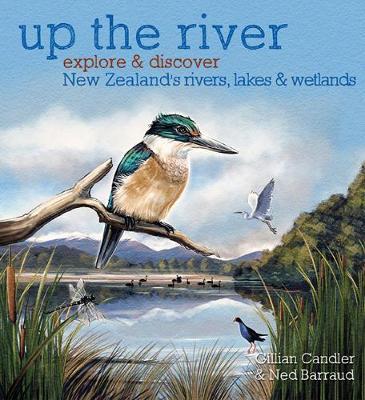
Up the River
By Gillian Candler
Illustrated by Ned Barraud
Published by Potton & Burton
RRP: $20




